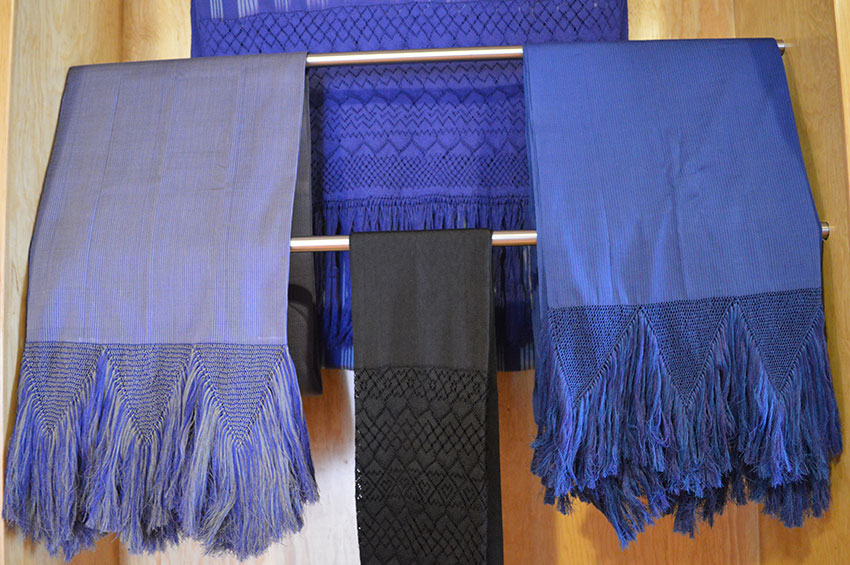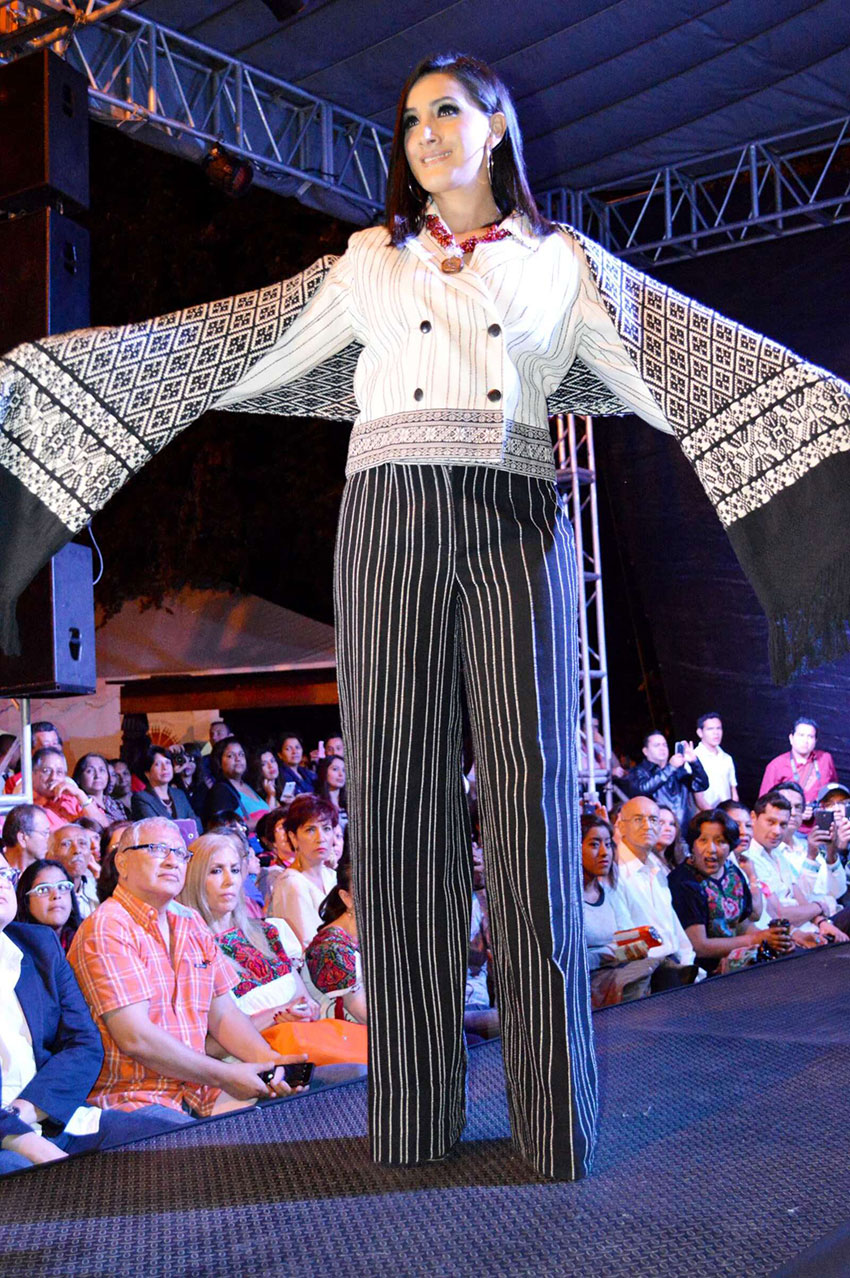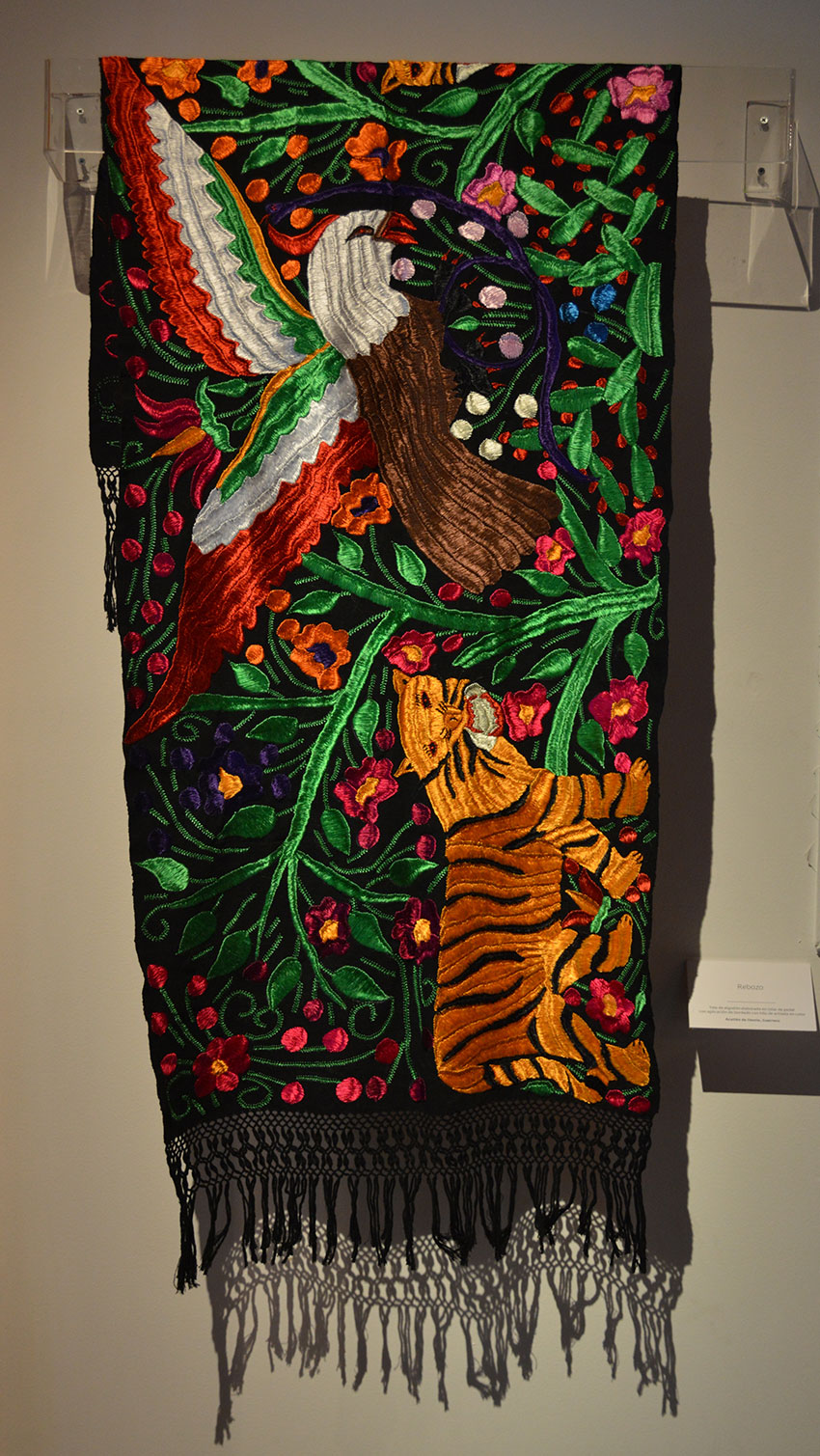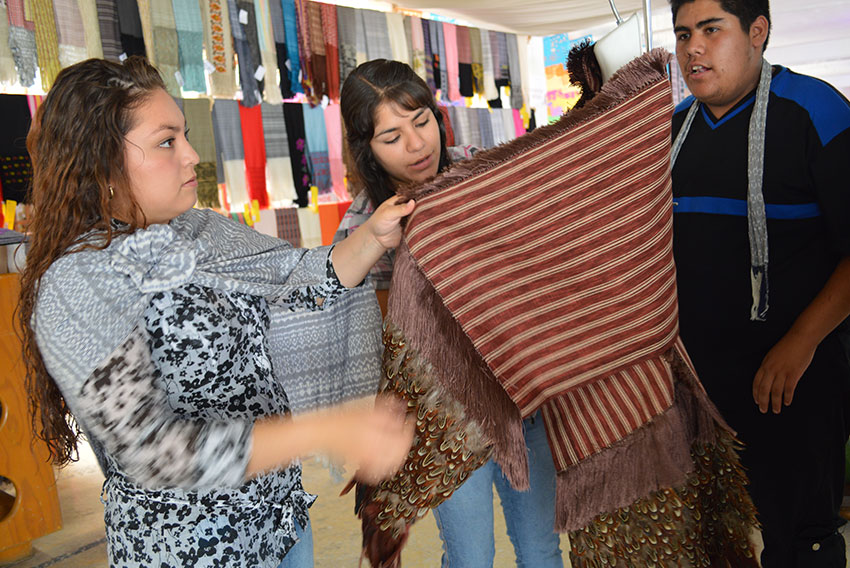On September 16, Mexican Independence Day, millions of women dig out the rebozos in their closets to wear with genuine pride. But this yearly ritual also demonstrates an ambivalence that many Mexicans have about their heritage.
The rebozo is a garment that much of the world connects to Mexico, even if they do not know its name. In the past century or so, it was prominently worn by famous women like artist Frida Kahlo, actress María Félix and more recently singer Lila Downs and former Mexican first lady Margarita Zavala.
Its mexicanidad has been reinforced in Mexican cinema, television, and children’s songs to the present day.
It is a flat, rectangular garment that looks like a cross between a scarf and a shawl. It is made from cloth specifically woven for the purpose, with the loose fringes on both ends often tied in intricate knots. It is traditionally wrapped around the upper body and may cover the head as well.
Depending on the fiber, thickness, and decoration, it can be used to protect the wearer from the sun and/or the cold, or simply be an accessory. Rebozos, especially in the past, could be as long as four meters, but today most are around 1.5.

The Spanish name comes from “rebozar” meaning to cover or envelope, and the garment has many other names from Mexico’s indigenous languages. It is not indigenous, but rather emerged in the early colonial period, prominent first among lower-class mestizo women, and is a combination of indigenous, European, and Asian textile traditions.
From the colonial period through the 19th century, it had the important purpose of preserving women’s modesty by covering the hair and deemphasizing the bosom.
The use of the garment spread into indigenous communities, and “upward” to women of higher social rank. This led to wide variation in fibers, decoration, and even fringe treatment. By the 19th century, even the Empress Carlota of the Second Mexican Empire wore one on occasion, cementing it as an essential garment for all Mexican women at the time. This was the height of the garment’s status.
This status took a hit during the Porfirian era (late 19th and very early 20th century) when modernization was emphasized along with anything French. This was followed by the Mexican Revolution, when women revolutionaries called “Adelitas,” not only wore rebozos to show they were not part of the elite, but also to hide weapons from authorities.
It is the images of these women captured by foreign correspondents that created the garment’s current appeal, reinforced by Mexican and U.S. movies some decades later. It was iconic Mexico, but again associated with lower-class and indigenous rural women, not modern ones.
The use of the rebozo fell to the point that now it is quite rare to see one in any of Mexico’s major cities. To see rebozos in the street regularly, it is necessary to go into Mexico’s traditional rural communities in states such as Michoacán, Oaxaca and Chiapas, along with parts of Guanajuato, Puebla and Tlaxcala.

Because of climate, they tend to be found in mountain communities rather than on the hot and humid coasts. The main rebozo makers are found mostly in these same states, in part because the design and materials of rebozos are tied to specific communities.
Rebozos range from monotone in simple or complicated weaves (often called chalinas) to those with intricate woven and/or dyed patterns, and/or embroidery. Fringe knotting can be extremely complicated as well, generally done by women who specialize in this.
There are three towns particularly noted for making rebozos. Santa María de Río, San Luis Potosí, is known for extremely fine silk rebozos, so thin that the best can be threaded through a wedding ring. Tenancingo, México state, is known for cotton rebozos with patterns created through ikat, an Asian dyeing method.
The threads are dyed, not the entire garment, and it is not possible to see the pattern until the rebozo is woven. La Piedad, Michoacán, stands out because it has several major businesses/cooperatives producing in quantity for the surrounding region.
During the rebozo’s height of popularity, sophisticated versions took months of work, with elements such as the finest fibers, gold and silver thread, beads, intricate embroidery, and more. These rebozos were family heirlooms, often given as gifts for special occasions. At one point it was given to a woman instead of an engagement ring. It is still possible to find or order such treasures, but it is rare and becoming rarer.
Even today, a “true” rebozo is woven on a pedal or backstrap loom at the very least. It is absolutely never cut from a commercial bolt of cloth. Although cheap acrylic machine woven versions can be had for 100-200 pesos, handwoven rebozos can easily run into the thousands of pesos.

It is said that wearing a rebozo makes a woman more feminine, but the garment can be quite practical and is used to carry children and bundles. The child or bundle is placed on the woman’s back (men never do this), and the rebozo is wrapped around both, tied at the chest, over the shoulder, or across the forehead.
In the most conservative areas of Mexico, the rebozo retains its modesty function with women’s heads and torsos wrapped, especially in church.
The rural/indigenous/”backward” symbolism of the garment which (re)attached with the Revolution creates a kind of conundrum for modern city women in Mexico. They were raised with the values of the Revolution, but the urge to be part of the modern, globalized world is strong.
For these women, they will buy at least one, but its wearing is reserved only for when she wants to make a statement with it at civic or cultural functions — hence its use on September 16.
The drop in demand for rebozos means that many types have disappeared over the past decades and more are on the brink. There have been efforts to preserve and promote making and wearing rebozos, such as weaving contests and fairs, especially in September (at least in normal times without Covid-19).
Contemporary fashion designers have taken on the garment as well, both creating more contemporary decoration as well as finding new ways to wear it.

Leigh Thelmadatter arrived in Mexico 17 years ago and fell in love with the land and the culture. She publishes a blog called Creative Hands of Mexico and her first book, Mexican Cartonería: Paper, Paste and Fiesta, was published last year. Her culture blog appears weekly on Mexico News Daily.
